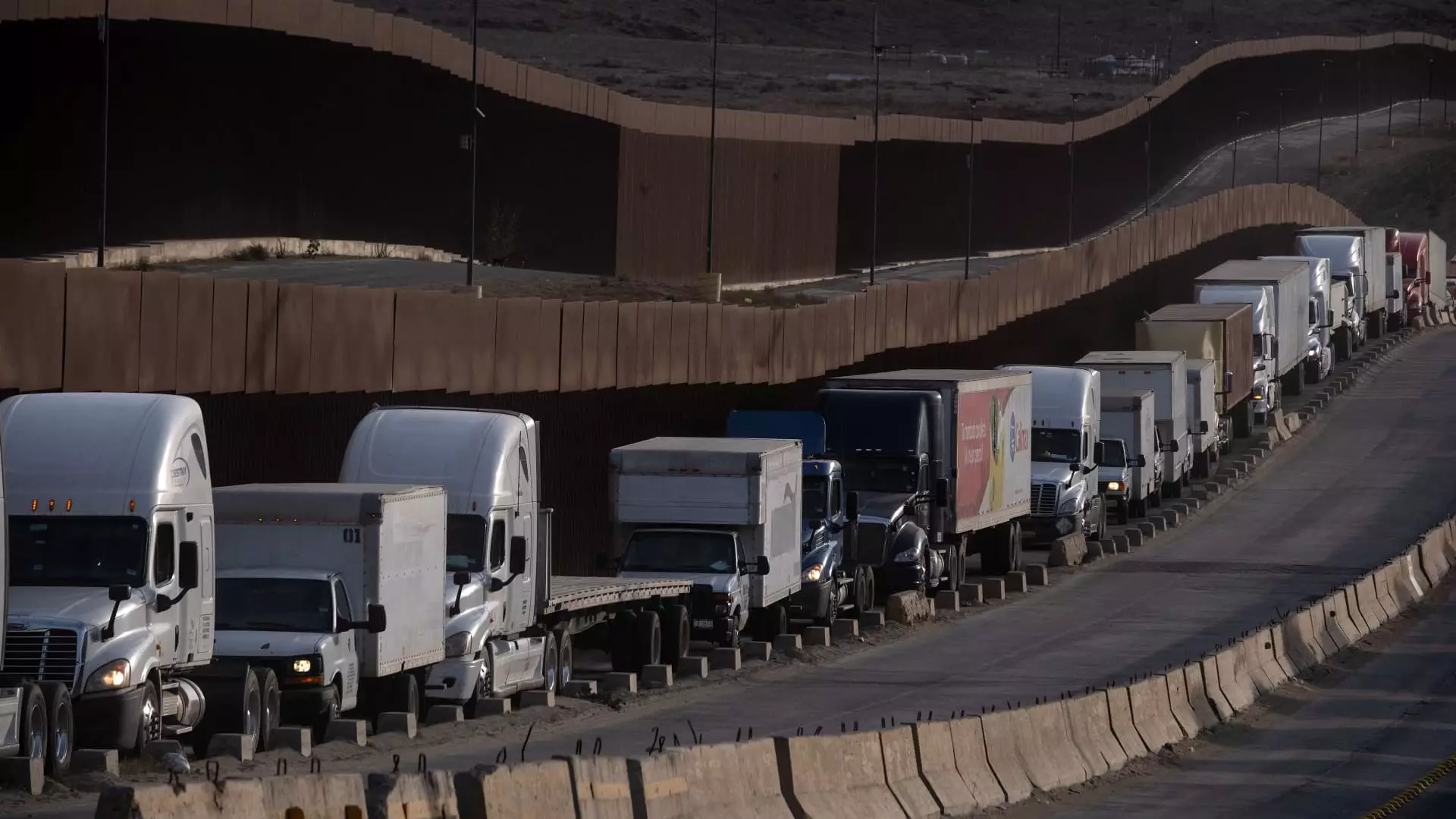The announcement of proposed tariffs by President Donald Trump on key trading nations—Mexico, Canada, and China—has ignited a fiery debate regarding the potential economic ramifications. These tariffs signal a more protectionist approach toward international trade, which raises concerns among various sectors in the U.S. economy. With businesses heavily reliant on imports and supply chains intertwined with these countries, the introduction of tariffs poses significant challenges. Experts across the financial landscape are analyzing these implications, yet consensus indicates a likely contraction in U.S. growth coupled with increased inflationary pressures.
One of the most affected sectors is retail, particularly in industries relying on imported fashion goods and apparel. Many U.S.-based fashion retailers draw their merchandise from Mexico and China, placing them on the frontline of potential tariff repercussions. For instance, companies like Boot Barn face risks tied to over 50% of their production sourced from these countries. Analysts are increasingly wary that heightened costs from tariffs could siphon profits and constrain the ability of these companies to maintain their competitive pricing.
The imposition of tariffs creates an unsettling environment for consumer-facing companies, as consumers may be forced to bear the brunt of increased prices. Fashion retailers, which have maintained slim margins, might struggle to absorb additional costs without passing them on to consumers, thereby contributing to an overall rise in the cost of living. The risk of financial strain across the retail landscape raises questions about the future purchasing power of the average American, especially among lower-income households.
The impact of proposed tariffs also extends into the automotive industry, a pivotal sector of the U.S. economy. Major manufacturers like Ford and General Motors, which design and manufacture vehicles in both Canada and Mexico, could see their profit margins compressed if tariffs are enacted. Analysts suggest that the imposition of a 25% tariff could lead to an additional strain estimated at $50 billion across the automotive value chain.
The potential disruptions in production and supply due to these tariffs could result in increased vehicle prices for consumers. Furthermore, as industry executives voice concerns about how tariffs might alter the market landscape, the automobile sector is gripped by uncertainty. The efficacy of their business strategies hinges on overcoming these tariff-related challenges; failure to adapt could destabilize their operations significantly.
The beverage industry is not immune to the effects of tariffs, especially concerning imports of beer and spirits. With Mexico being a substantial source of U.S. beer imports, accounting for 83% of the total, many companies face heightened risk. Renowned brands, such as Constellation Brands—which commands popular Mexican beer labels including Corona—are at great risk of margin compression due to the proposed tariffs.
The implications for the alcohol market are profound. If tariffs lead to increased production costs, stakeholders in the industry must navigate the fine line between maintaining profit margins and pricing products out of the reach of consumers. Higher consumer prices may lead to lower sales volumes, adding another layer of stress to an already volatile environment.
In light of the broad strokes of potential tariffs, the prevailing sentiment leans toward caution. Analysts foresee a ripple effect that could surge through different sectors, stifling U.S. economic growth and exacerbating inflationary pressures. The fragile state of U.S. consumer spending poses a significant challenge, particularly for lower-income groups who may find themselves disproportionately affected by rising costs.
The uncertainty introduced by such trade measures calls for vigilance. Stakeholders across various industries must carefully strategize to mitigate these anticipated adverse effects while advocating for negotiations that may ease tensions and help avert an all-out trade war. As the U.S. grapples with complexities stemming from these proposed tariffs, it is evident that the path forward must be navigated with care to maintain economic stability.


Leave a Reply